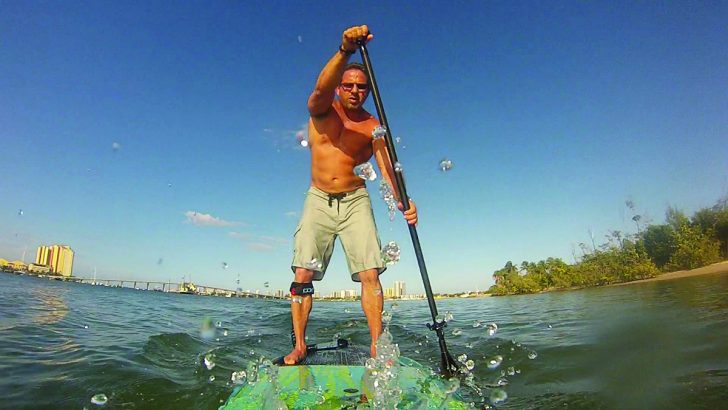By Chris Anders, Contributing Writer
The paddle is an extension of your body which connects you to the water. A lot of newbies to the SUP life often make the wrong choice when choosing their paddle. For one, a good paddle can cost about 30% of the board alone. With the average entry level board costing about $1,000.00, plus another $200-$400 for a paddle, many beginners choose the $100 Aluminum Paddle. However, you will not be happy with that paddle, because it would be better used as an anchor. Oh, and some of those cheap paddles don’t float, so don’t let go.
So you bought a board with the intention that it will be the communal recreational board for the whole family. So now you need a paddle that will work for kids, and adults of all ages and sizes. If this is your predicament then you need an adjustable paddle. If you are going to be the only user of this paddle then go for the fixed handle and cut it to your length. Carbon fiber must be a part of the paddle, it doesn’t have to be full carbon but the shaft must be carbon. To bring down the weight of the paddle they use a carbon shaft, to bring down the cost of the paddle they use fiberglass blade. These paddles usually weigh around 18-20 oz. (uncut) and the cost average of $260. Some good paddles that you should look at are the Riviera Asset Adjustable, Werner Soul, Naish Hele Vario SDS and the Quick Blade Kanaha. If you want to go all out then get a full carbon shaft and carbon blade but look to add another $100.00 as opposed to the adjustable. Paddles are essential to your SUP experience. If you have a heavy paddle that is poorly designed, the only thing you’ll be fast at is getting fatigued.
There are a few blade sizes that all the manufactures offer, 8.0”, 8.5”and 9.0”. Keep in mind the smaller the blade the less energy you will expend to paddle through the water, however, you do move less water. Larger blades are designed for stronger and larger paddlers and will move a larger volume of water.
Take care of your paddle, they aren’t indestructible. Paddles seem simple and maintenance free and for the most part they are, but, they do have their flaws especially carbon fiber. The most susceptible part of your paddle is the blade. The blade usually has a foam core and if the air inside that foam core gets hot enough it will expand and deform your blade. The most common mistake is that we leave our paddles in the car for long periods of time while the sun bakes through the windows. Another way to prevent damage to your blade is don’t use it as a “push pole”. Don’t push off rocks and sand or you may fold the blade or cause small cracks in the blade that will allow water intrusion and destroy your blade.
Chris Anders, CEO
Palm Beach Boat Club and Paddleboard Shop
561.840.1901 • www.thepalmbeachboatclub.com
